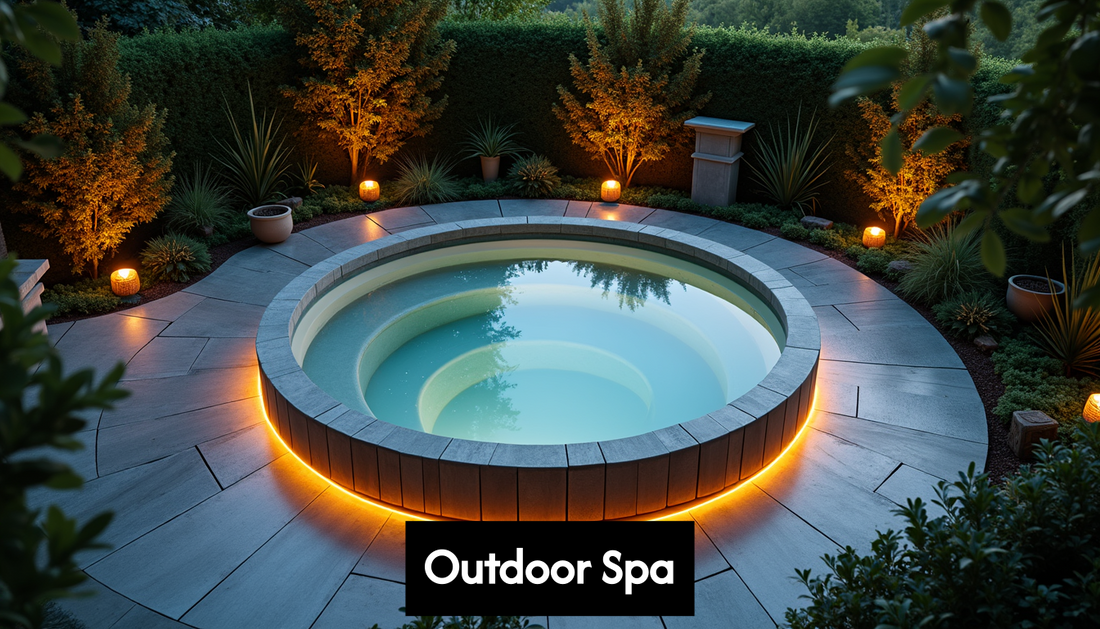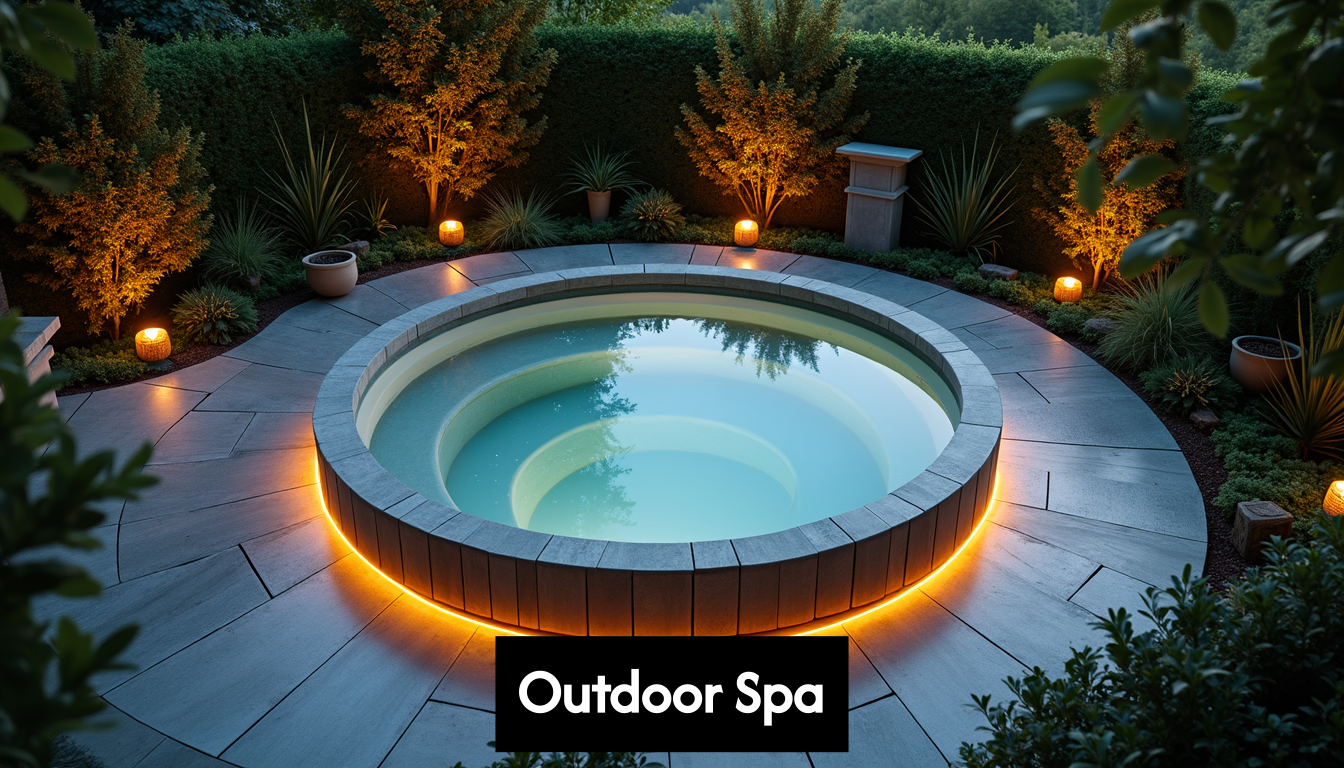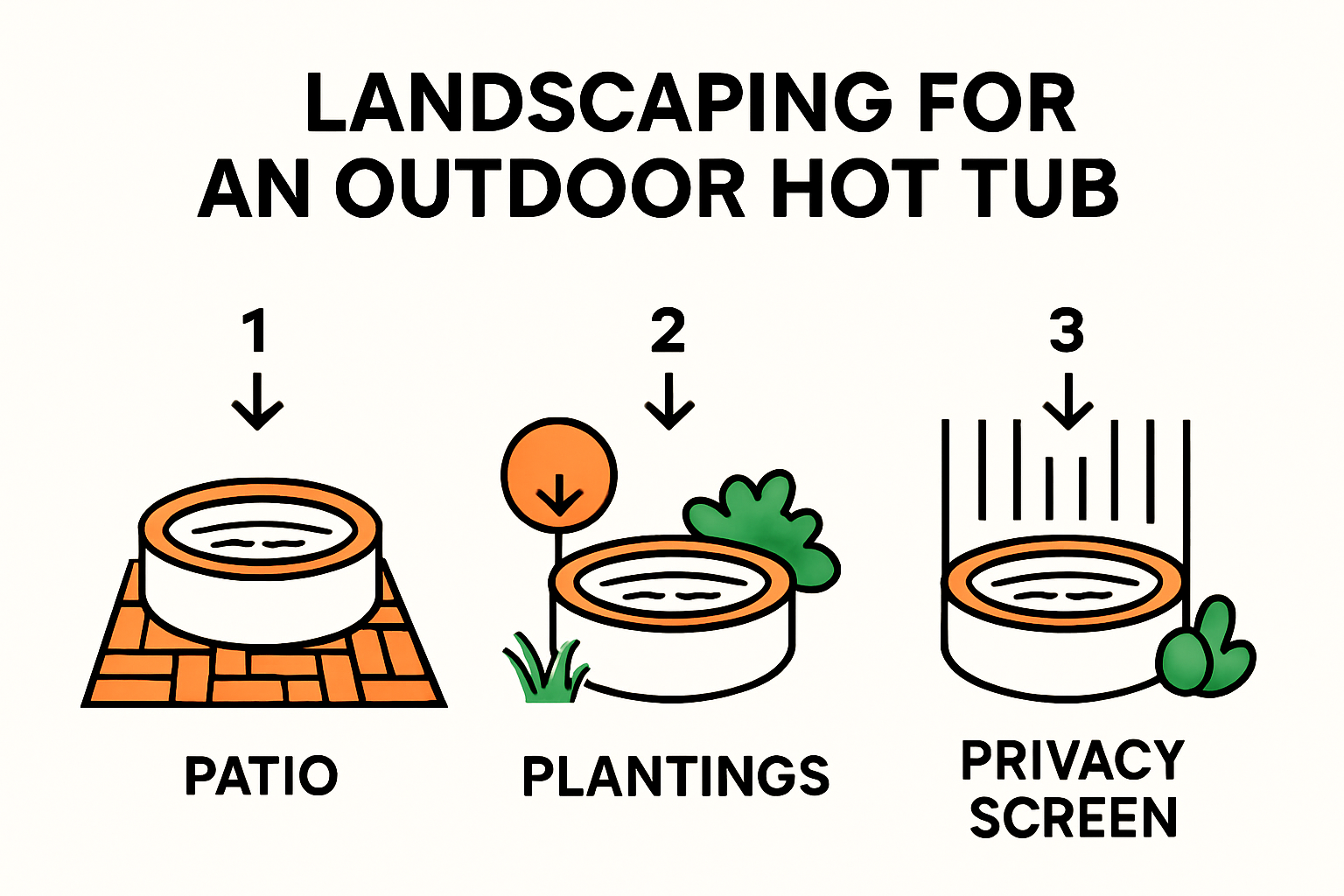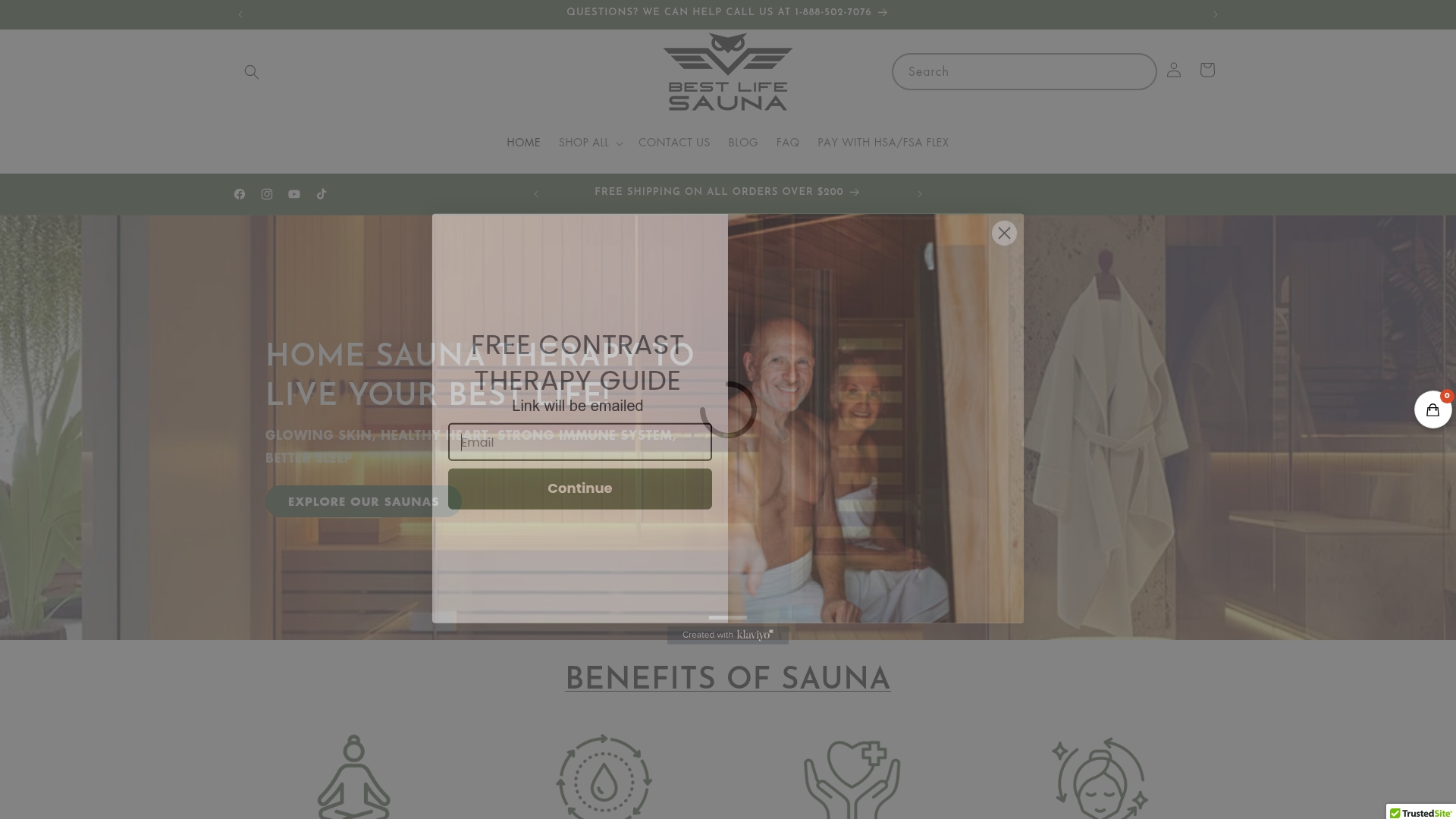
50 Stunning Outdoor Spa Ideas for Your Backyard
 Outdoor spas can transform your backyard into a serene oasis. A well-designed spa area can increase the value of your home by up to 15 percent. But here’s the twist: the spa itself is just one part of the equation. The real magic lies in how you design the surroundings. Picture this: a chic atmosphere where lush landscaping, inviting lighting, and personal touches create a wellness retreat that beckons you to unwind after a long day. The possibilities are endless.
Outdoor spas can transform your backyard into a serene oasis. A well-designed spa area can increase the value of your home by up to 15 percent. But here’s the twist: the spa itself is just one part of the equation. The real magic lies in how you design the surroundings. Picture this: a chic atmosphere where lush landscaping, inviting lighting, and personal touches create a wellness retreat that beckons you to unwind after a long day. The possibilities are endless.
Table of Contents
- Choosing Your Perfect Backyard Spa
- Designing Spa Surroundings And Access
- Lighting And Ambiance For Outdoor Spas
- Landscaping Around Your Hot Tub Oasis
- Essential Outdoor Spa Design Details
Quick Summary
| Takeaway | Explanation |
|---|---|
| Understand Your Spa Style and Purpose | Assess whether your spa will focus on wellness, social entertaining, or fit in compact spaces to choose the right model that meets your needs. |
| Evaluate Spatial and Environmental Considerations | Measure available space for your spa and ensure it integrates well with your landscape, keeping in mind factors like load-bearing capacity and privacy. |
| Integrate Surroundings Thoughtfully | Blend natural elements with your spa area using strategic plantings and pathways to enhance ambiance and privacy, while ensuring functional access and circulation. |
| Prioritize Lighting Design | Implement a layered lighting strategy incorporating ambient, accent, and task lighting to enhance safety and create an inviting atmosphere for your outdoor spa. |
| Select Durable Materials | Choose weather-resistant and sustainable materials that maintain both visual appeal and longevity to ensure your outdoor spa remains a resilient wellness sanctuary. |
Choosing Your Perfect Backyard Spa
Creating the ideal outdoor spa requires careful consideration of multiple factors that transform your backyard into a personal wellness sanctuary. Your spa selection isn’t just about purchasing a product—it’s about designing a holistic relaxation experience tailored to your lifestyle, space, and wellness goals.
Understanding Your Spa Style and Purpose
Before diving into specific outdoor spa design ideas, assess your primary objectives. Are you seeking therapeutic muscle recovery, romantic evening entertainment, or a family-friendly relaxation zone? Different spa styles cater to varied needs. Hydrotherapy-focused models offer strategic jet placements for muscle relief, while entertainment-oriented spas might feature LED lighting and sound systems.
Consider your typical usage patterns:
- Wellness Focus: Choose spas with advanced massage jet configurations
- Social Entertaining: Opt for larger models with comfortable seating
- Compact Spaces: Select smaller, strategically designed hot tubs
According to Global Wellness Institute, proper spa design integrates functional hydrothermal features that enhance personal well-being while maintaining aesthetic appeal.
Evaluating Spatial and Environmental Considerations
Your backyard’s landscape plays a crucial role in successful outdoor spa design. Measure available space meticulously, considering not just the spa’s footprint but surrounding areas for comfortable movement and potential landscaping. Sustainable design principles recommend creating harmonious transitions between your spa and existing outdoor environments.
Key spatial factors include:
- Ground levelness and load-bearing capacity
- Proximity to electrical connections
- Natural wind protection
- Privacy considerations
- Potential drainage requirements
Research from Sustainable Design Studies emphasizes that spatial arrangement significantly influences spa enjoyment. Strategic placement can transform your backyard spa from a mere installation to an immersive relaxation experience.
Technical and Maintenance Factors
Beyond aesthetic appeal, technical specifications determine long-term satisfaction. Energy efficiency, insulation quality, and maintenance requirements are critical. Modern outdoor spa designs incorporate advanced technologies like smartphone app controls, self-cleaning systems, and eco-friendly heating mechanisms.
When evaluating technical aspects, prioritize:
- Energy Star ratings
- Quality of internal components
- Manufacturer warranty
- Ease of maintenance
- Material durability
Investing time in comprehensive research ensures you select an outdoor spa that not only meets immediate relaxation needs but provides years of consistent performance and enjoyment. Remember, the perfect backyard spa is a personalized fusion of functionality, design, and individual wellness goals.
Designing Spa Surroundings and Access
Transforming your backyard spa area into a cohesive, inviting retreat requires strategic planning that extends beyond the spa itself. The surrounding environment plays a critical role in creating an immersive relaxation experience that enhances both aesthetic appeal and functional utility.
Integrating Natural Elements and Landscape
Successful outdoor spa design seamlessly blends your hydrotherapy space with the existing landscape. Natural elements create a transitional zone that softens architectural lines and promotes a sense of tranquility. According to Global Wellness Institute, thoughtful integration of local materials and surrounding greenery can dramatically enhance the sensory experience of an outdoor spa environment.
Consider these landscape integration strategies:
- Strategic Plantings: Use native shrubs and ornamental grasses to create privacy screens
- Natural Stone Pathways: Design walking areas that complement your spa’s aesthetic
- Water Features: Incorporate small fountains or cascading elements to enhance ambiance
Creating Functional Access and Circulation
Effective spa area design demands careful consideration of movement and accessibility. Research from Purdue University’s Environmental Design Studies highlights that spatial organization significantly influences user satisfaction and frequency of use. Plan your outdoor spa area to ensure smooth, unobstructed pathways that facilitate easy movement while maintaining a sense of privacy and intimacy.
Key access design principles include:
- Establish clear, level entry points
- Design non-slip surfaces around the spa
- Create adequate lighting for evening and nighttime use
- Minimize potential trip hazards
- Ensure convenient storage for towels and accessories
Privacy and Atmospheric Enhancements
Transforming your outdoor spa area into a personal sanctuary requires thoughtful design that balances openness with privacy. Implement visual barriers and screening techniques that create a sense of seclusion without feeling claustrophobic. Architectural elements like pergolas, decorative screens, and strategic landscaping can provide natural privacy solutions.
Consider atmospheric enhancements such as:
- Ambient lighting systems
- Outdoor sound systems for relaxation music
- Wind protection screens
- Comfortable seating areas adjacent to the spa
Your spa surroundings should reflect a holistic approach to wellness, creating an environment that promotes relaxation, rejuvenation, and a seamless connection between indoor comfort and outdoor natural beauty. By carefully choreographing each design element, you can transform a simple backyard spa installation into a sophisticated wellness retreat that invites repeated use and deep relaxation.
Lighting and Ambiance for Outdoor Spas
Lighting transforms an ordinary outdoor spa from a simple installation to an enchanting wellness sanctuary. Strategic illumination not only enhances safety but creates immersive sensory experiences that elevate relaxation and aesthetic appeal of your backyard retreat.
Layered Lighting Design Principles
Effective outdoor spa lighting requires a nuanced, multi-dimensional approach. Research from Lighting Design Studies emphasizes the importance of integrating general, task, and mood lighting to create comprehensive visual environments. This layered strategy ensures functional visibility while simultaneously crafting atmospheric depth.
Consider these strategic lighting layers:
- Ambient Lighting: Soft, overall illumination providing general visibility
- Accent Lighting: Highlighting architectural features and landscaping
- Task Lighting: Focused illumination for pathways and spa entry points
Carefully selected fixtures can dramatically reshape your outdoor spa’s character, transitioning seamlessly between daytime functionality and nighttime enchantment.
Color Temperature and Emotional Mapping
Lighting color temperatures play a critical psychological role in creating spa environments. According to National Institutes of Health research, warm color temperatures between 2700-3000K promote relaxation and reduce stress, making them ideal for outdoor spa settings.
Strategic color temperature applications include:
- Warm amber tones for intimate, calming atmospheres
- Soft white lights for balanced, natural illumination
- Programmable LED systems offering color-changing capabilities
Beyond aesthetic appeal, these carefully curated lighting experiences can influence mood, encouraging deeper relaxation and sensory engagement.
Technical Considerations and Safety
Outdoor spa lighting demands specialized technical considerations to ensure durability, safety, and performance. Technical Lighting Experts recommend using wet-rated fixtures specifically designed for exterior, moisture-prone environments.
Key technical recommendations include:
- Waterproof and corrosion-resistant fixtures
- Low-voltage LED systems for energy efficiency
- Motion-activated and programmable lighting controls
- Glare-reduction techniques to prevent eye strain
- Underground conduit installations for electrical safety
By integrating sophisticated lighting design, you can transform your outdoor spa into a mesmerizing nighttime retreat that beckons relaxation, provides functional illumination, and creates an immersive sensory experience. Remember, exceptional lighting is about crafting an environment—not just installing fixtures.
Landscaping Around Your Hot Tub Oasis
Transforming the area surrounding your hot tub from a mere functional space to an immersive landscape requires strategic design and thoughtful plant selection. Your outdoor spa’s surrounding environment plays a crucial role in creating a holistic relaxation experience that extends beyond the hydrotherapy zone.

Design Integration and Spatial Harmony
Successful hot tub landscaping is about creating seamless transitions between hardscaping and natural elements. Landscape Design Experts emphasize the importance of treating your spa as an integrated design element rather than an isolated installation. This approach prevents the hot tub from appearing like an afterthought and ensures smooth traffic flow in your outdoor living space.
Key design integration strategies include:
- Geometric Alignment: Match landscaping shapes to your spa’s geometry
- Material Continuity: Use complementary hardscaping materials
- Visual Layering: Create depth through strategic plant placement
According to Bill Bell, President of Buds Spas and Pools, utilizing cube-shaped raised beds, timber sleeper steps, and square pavers can create a cohesive, minimalist aesthetic that enhances your spa’s visual appeal.
Plant Selection and Natural Screening
Carefully chosen plants can transform your hot tub area from an exposed installation to an intimate, private retreat. Ornamental grasses and strategic plantings offer both aesthetic beauty and functional privacy. Landscape Design Research recommends using soft, tactile plants like Mexican feathergrass and festuca glauca to soften hardscaping and create a relaxing atmosphere.
Consider these plant selection principles:
- Choose plants that thrive in your local climate
- Select low-maintenance, evergreen varieties
- Create multi-level screening with varying plant heights
- Use plants that can withstand occasional moisture and chemical exposure
Functional Landscaping Considerations
Beyond aesthetic appeal, your hot tub landscape must prioritize practical functionality. Consider drainage, accessibility, and maintenance when designing the surrounding area. Proper grading ensures water runoff, while strategic pathway design maintains ease of access.
Essential functional landscaping elements include:
- Non-slip surface materials around the spa
- Adequate drainage systems
- Wind-protected areas
- Storage solutions for towels and accessories
- Minimal debris-producing plants to reduce maintenance
Your hot tub landscape should be a carefully choreographed balance between beauty, privacy, and practicality. By thoughtfully integrating design elements, selecting appropriate plants, and considering functional requirements, you can create an outdoor spa environment that feels like a natural extension of your living space—a personal oasis that invites relaxation and rejuvenation.
Essential Outdoor Spa Design Details
Designing a sophisticated outdoor spa requires meticulous attention to nuanced details that extend far beyond basic installation. These critical design elements transform an ordinary backyard feature into a refined wellness sanctuary that harmonizes functionality, aesthetics, and personal comfort.
Material Selection and Durability
Global Wellness Institute research emphasizes the importance of selecting materials that can withstand varied environmental conditions while maintaining visual appeal. Sustainable design principles recommend using materials that are not only aesthetically pleasing but also resilient and environmentally conscious.
Essential material considerations include:
- Weather-Resistant Composites: Engineered materials that resist UV degradation
- Natural Stone Elements: Granite and slate for timeless, durable surfaces
- High-Performance Wood Treatments: Cedar and teak with protective coatings
- Corrosion-Resizable Metal Fixtures: Stainless steel and aluminum
Infrastructure and Technical Planning
Successful outdoor spa design demands sophisticated infrastructure planning. Sustainable Design Studies highlight the significance of comprehensive technical considerations that ensure long-term performance and user satisfaction.
Critical infrastructure elements include:
- Robust electrical systems with dedicated circuits
- Comprehensive waterproofing and drainage solutions
- Proper insulation for energy efficiency
- Seamless integration with existing landscape utilities
- Compliance with local building and safety regulations
Privacy and Sensory Experience Design
Creating an immersive outdoor spa environment transcends physical construction—it’s about crafting a holistic sensory experience. Strategic design elements can transform your spa area into a private, tranquil retreat that stimulates relaxation and rejuvenation.
Sensory design strategies encompass:
- Architectural screening techniques
- Acoustic dampening through landscaping
- Temperature regulation mechanisms
- Wind protection structures
- Textural variations in surrounding materials
By meticulously addressing these essential design details, you’ll create an outdoor spa environment that goes beyond mere functionality. Your space will become a personalized wellness sanctuary that reflects sophisticated design principles, promotes relaxation, and seamlessly integrates with your unique lifestyle and aesthetic preferences. Remember, exceptional outdoor spa design is an art form that balances technical precision with sensory poetry.
Frequently Asked Questions
What are the main considerations when choosing an outdoor spa for my backyard?
When selecting an outdoor spa, consider your spa style and purpose, available space, environmental factors, technical and maintenance requirements, and the intended ambiance.
How can I enhance the ambiance around my outdoor spa?
Enhance your outdoor spa ambiance by integrating natural elements like plants, creating functional access pathways, and adding layered lighting for safety and a relaxing atmosphere.
What lighting options work best for outdoor spas?
Layered lighting design is ideal; combine ambient, accent, and task lighting. Use warm color temperatures between 2700-3000K to create a calming environment and ensure safety with well-lit pathways.
How do I effectively landscape around my hot tub?
To landscape around your hot tub, choose durable, low-maintenance plants, create natural privacy screens, and ensure functional elements like drainage and non-slip pathways for safety.
Transform Your Outdoor Environment into a Wellness Retreat
Are you ready to elevate your outdoor spa experience? From creating functional spaces around your spa to optimizing your overall wellness, the article explores stunning ideas that can transform your backyard into a serene oasis. But here’s the secret: enhancing relaxation doesn’t stop with just a hot tub or spa; it’s about incorporating complementary wellness products that truly complete your experience. 🌿
!
Explore Best Life Sauna’s variety of premium sauna products and find the perfect complement to your outdoor spa. Imagine seamlessly integrating an infrared sauna, cold plunge tub, or luxurious swim spa right into your wellness oasis! You’ll not only maximize relaxation but also boost your health benefits—stress relief, improved circulation, and skin rejuvenation—all in a harmonious outdoor environment. Take advantage of our free shipping on orders over $200!
Discover your wellness transformation today at Best Life Sauna — your backyard sanctuary awaits!
Recommended Articles
- Infrared Sauna Advantages: Top Health Benefits in 2025 – Best Life Sauna
- Unlocking the Health Benefits of Saunas – Best Life SaunaBest Life Sauna - Premium Saunas for WellnessAmerican ExpressApple PayDiners ClubDiscoverGoogle PayMastercardPayPalShop PayVisa
- The Definitive Guide to Sauna Heat Types & Benefits – Best Life Sauna
- Discover the Best Time to Use Sauna for Optimal Health – Best Life Sauna
- Discover the Benefits of Outdoor Saunas for Health, Relaxation & Home – Best Life SaunaBest Life Sauna - Premium Saunas for WellnessAmerican ExpressApple PayDiners ClubDiscoverGoogle PayMastercardPayPalShop PayVisa


